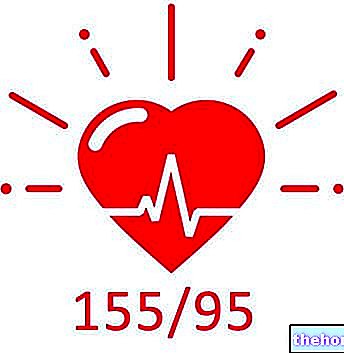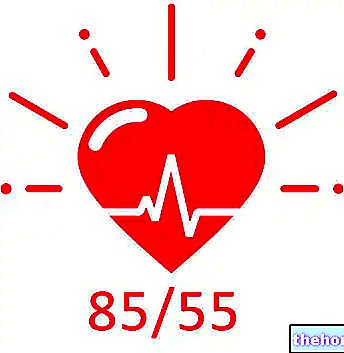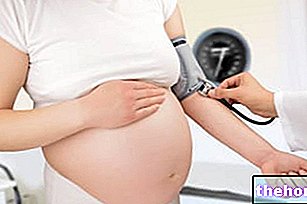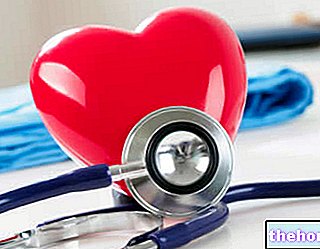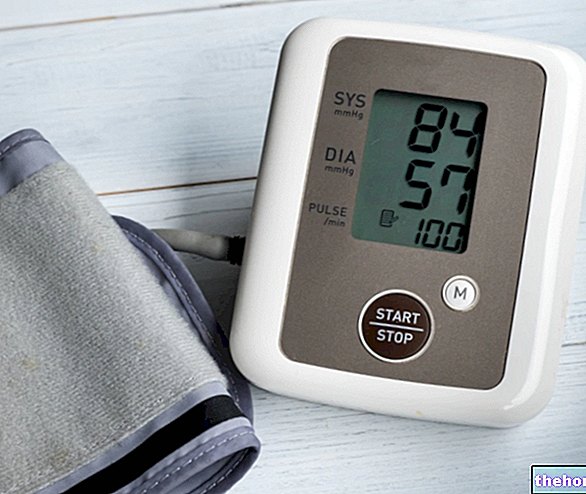Arterial pressure represents the force exerted by blood on the walls of the arteries in which it flows. The input is given by the "cardiac pump", during the left ventricular systole, at the end of which the support of the elastic return of the arteries intervenes. These larger caliber vessels, thanks to the presence of elastic and muscular tissue, facilitate blood progression and help to regulate the flow. The pressure exerted by the heart on the blood mass relaxes the arterial walls, which accumulate elastic energy to be released in the subsequent phase of diastole (ventricular relaxation). The energy accumulated during systole is then slowly transferred to the blood column direct to the suburbs; in this way the arteries help to transform the intermittent blood flows, coming from the heart, into a continuous (laminar) flow, essential to allow normal exchanges at the capillary level.
If the walls of the arteries were rigid, the systolic pressure would rise rapidly, and then leave room for an "equally sharp drop in blood pressure in the diastolic phase. This is the reason why aging, and the various pathological states (such as atherosclerosis) that lead to loss of vascular elasticity, accompanied by an increase in blood pressure (hypertension).
In the arteries of large and medium caliber, the arterial pressure still maintains a pulsatile pattern, which varies with the phases of the cardiac cycle: it is maximum during systole, and minimum during diastole.
Systolic pressure = pressure in the vessels during ventricular systole (max)
Diastolic pressure = pressure in the vessels during ventricular diastole (min)
Differential or pulsatory pressure = difference between systolic and diastolic pressure.
Consequently, the pressure values:
• they increase when the volume of circulating blood increases (hypernatremia), while they decrease when the total plasma volume decreases (haemorrhage, dehydration, orthostatic hypotension, edema);
• They increase as the hematocrit increases (because the blood is more viscous);
• They increase as cardiac output increases, which in turn increases as the rate and strength of contraction of the heart increases. The cardiac output is in fact given by the quantity of blood pumped by each ventricle in one minute; it is therefore expressed in liters / minute and is calculated with the formula Gs x f. Gs represents the systolic or pulsatory output, that is the volume of blood expelled at each heartbeat from a ventricle, and f the heart rate, that is the number of beats per minute. The systolic range Gs, in turn, is given by the end-diastolic ventricular volume (amount of blood present in the ventricle at the end of diastole or filling) minus the end-systolic ventricular volume (amount of blood remaining in the ventricle at the end of systole or emptying);
• They increase if at the peripheral level there is an important obstacle to the free flow of blood in the vessels, for example due to the presence of atherosclerotic plaques or the violent contraction of a muscle during physical exercise;
• They increase in exposure to cold, which causes vasoconstriction, while they decrease when taking a hot bath, a sauna or a Turkish bath;
• They increase in situations of strong psychophysical stress, due to the massive release of catecholamines which restrict the caliber of many arterioles, such as skin ones.
• They increase as the rigidity of the vessels in which blood flows increases;
• They decrease with the increase of the section and length of the vessels in which the blood flows (although the larger vessels are those close to the heart, such as the aorta, the total area is maximum at the peripheral level, given the myriad of very fine capillaries that supply the various tissues; consequently the arterial pressure is maximum at the aortic level and minimum at the capillary level.) The most important factor that modifies arterial pressure is given precisely by the radius of the vessels.
During aging, the pressure values tend to increase mainly because there is a loss of elasticity of the arteries, mainly due to the formation of the so-called atherosclerotic plaques (dangerous deposits essentially consisting of lipids, platelets, smooth muscle cells and white blood cells, which are formed in the internal lumen of medium and large caliber arteries).
the vessel walls are forced to withstand strong stresses which, when they become particularly high, can cause them to break. During a hypertensive crisis, the pressure exerted by the blood on the walls of the vessels is so high that it can wear them out or even break them; it is a bit like when, by watering the garden, we obstruct the outflow of water with a finger to increase the length of the jet. heart), but also the walls of the conducting tube (in this case the blood vessels), which in extreme cases can give way and become rigid. The heart, which is forced to contract against such a high resistance, can instead "give in" (heart attack) due to excessive effort.
There are various physiological conditions that change blood pressure:
• sex, as the woman has a blood pressure 5-7 mmHg lower than that of the man;
• age, since with age there are changes in blood pressure as the walls of the arteries become less distensible;
• physical activity, as the pressure increases during physical activity;
• changes in body position, since passing from supine to standing there is an increase mainly in diastolic (see orthostatic hypotension);
• digestion, during which it increases;
• sleep, decreases during non-REM sleep, while it increases during REM sleep;
• emotional states (fear, anger) lead to an increase due to the orthosympathetic intervention.
Blood pressure, what it is and how it is measured
Blood pressure is the force with which blood is pushed through the vessels. It depends on the amount of blood that the heart pushes when it pumps and on the resistances that oppose its free flow. What is blood pressure? PHYSICS teaches that pressure ... Read

